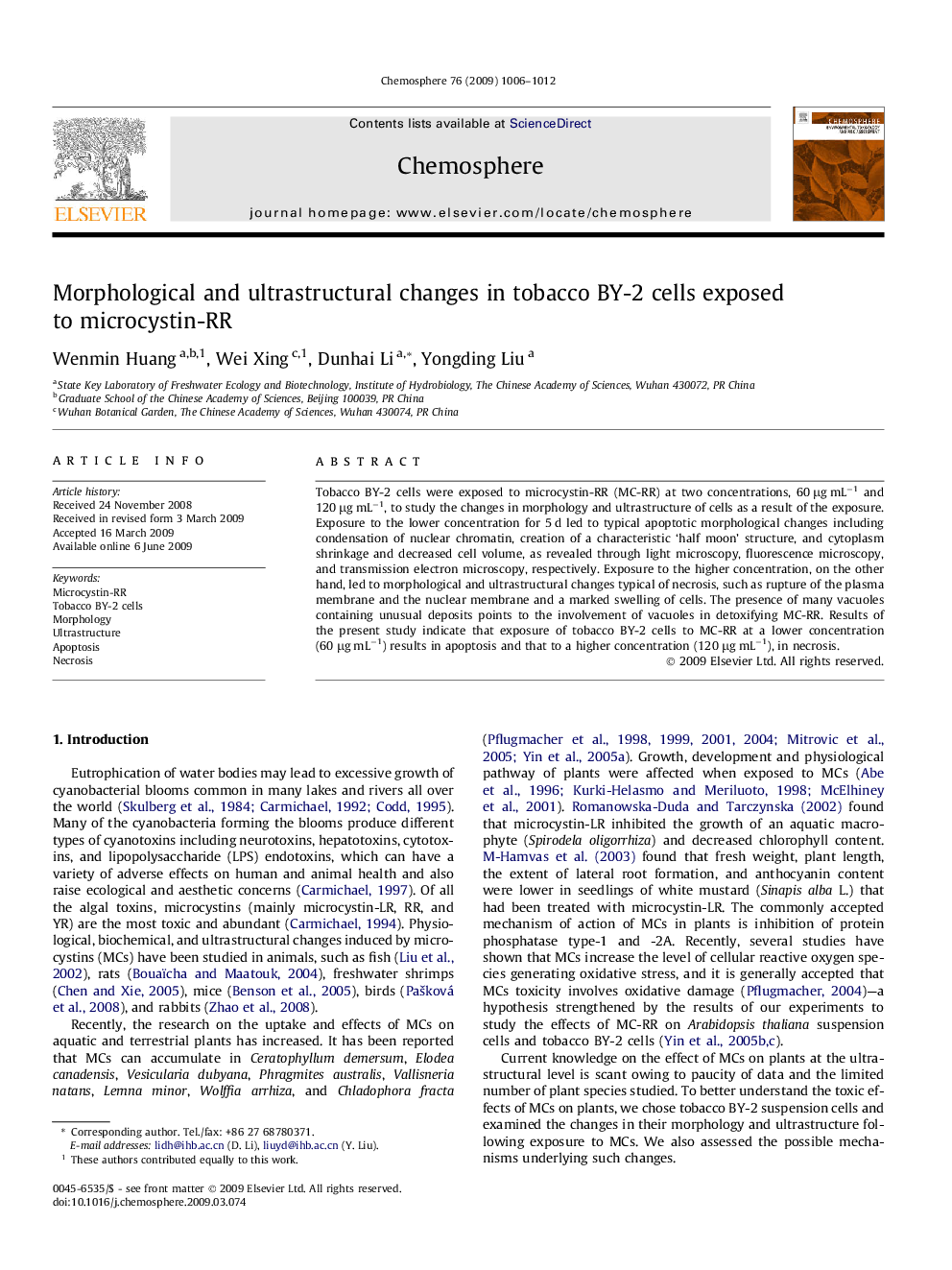| Article ID | Journal | Published Year | Pages | File Type |
|---|---|---|---|---|
| 4412714 | Chemosphere | 2009 | 7 Pages |
Tobacco BY-2 cells were exposed to microcystin-RR (MC-RR) at two concentrations, 60 μg mL−1 and 120 μg mL−1, to study the changes in morphology and ultrastructure of cells as a result of the exposure. Exposure to the lower concentration for 5 d led to typical apoptotic morphological changes including condensation of nuclear chromatin, creation of a characteristic ‘half moon’ structure, and cytoplasm shrinkage and decreased cell volume, as revealed through light microscopy, fluorescence microscopy, and transmission electron microscopy, respectively. Exposure to the higher concentration, on the other hand, led to morphological and ultrastructural changes typical of necrosis, such as rupture of the plasma membrane and the nuclear membrane and a marked swelling of cells. The presence of many vacuoles containing unusual deposits points to the involvement of vacuoles in detoxifying MC-RR. Results of the present study indicate that exposure of tobacco BY-2 cells to MC-RR at a lower concentration (60 μg mL−1) results in apoptosis and that to a higher concentration (120 μg mL−1), in necrosis.
